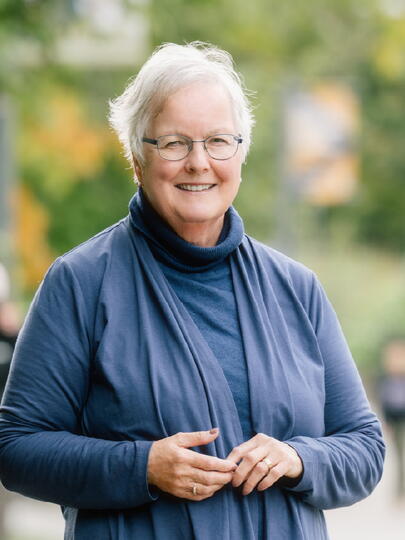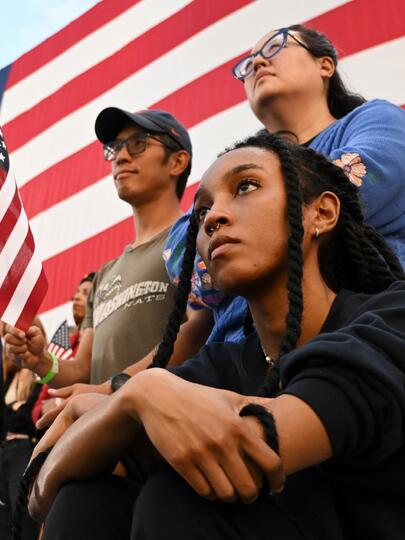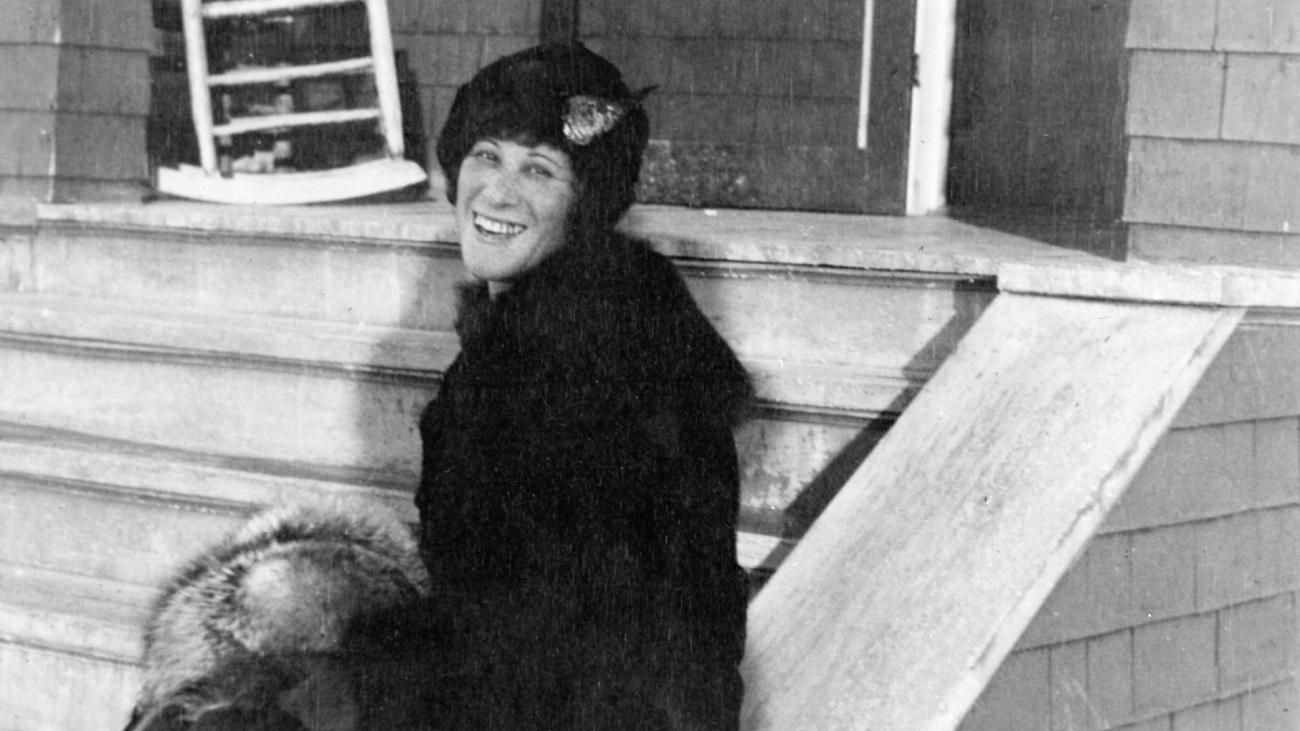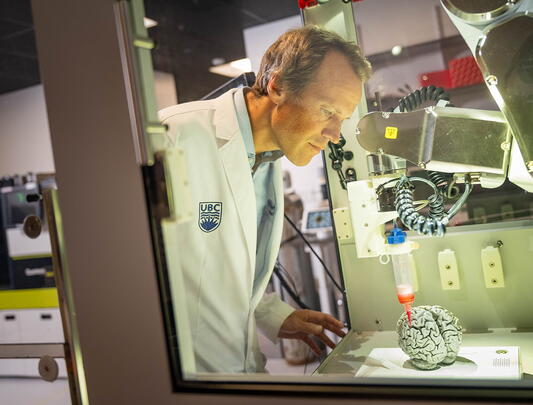Hollywood’s first Asian screenwriter, Winnifred Eaton, challenged its racism
A century before Michelle Yeoh became the first Asian woman to win an Oscar for Best Actress, the daughter of a Chinese mother and a white English father, Winnifred Eaton, was working behind the scenes in Hollywood.
Winnifred Eaton, often credited in Hollywood as Winnifred Reeve, was born in Montréal in 1875. She wrote and adapted scores of screenplays for MGM and Universal Studios, where she was literary advisor and editor-in-chief from 1925 to 1930.
Eaton was the first Asian screenwriter in Hollywood, and the first Asian — and first woman — to head a Hollywood script department.
Together with a team of scholars, including Joey Takeda and Jean Lee Cole, we are digitizing Eaton’s surviving screenplays so that her role in Hollywood, and the tradition of Asians in Hollywood, from Eaton to Yeoh, can be better understood.
Eaton was an advocate for more sympathetic depictions of women, the working classes, and some racialized people, but also complicit in her era’s racism and sexism. That her efforts to hold space for Asian characters and themes were ultimately rejected by Hollywood speaks volumes about its refusal to accept Asians in its Golden Age.
Early career
Eaton’s mother, Achuen Amoy, was born in China, and, as our research has uncovered, toured the world as a child apprentice to a Chinese acrobatic troupe. After returning to China, she met and married English silk importer Edward Eaton. The Eatons lived in England and New York before settling in Montréal.
Soon after Canada introduced the Chinese Head Tax in 1885, Eaton’s sister Edith Eaton began to publish sympathetic fictional and journalistic portraits of North American Chinatowns under the pen name “Sui Sin Far.”
Winnifred Eaton, however, began her career as an author at the height of the western popularization of Japanese art and design in a context of orientalism and racism. She published bestselling novels under the faux-Japanese pen-name “Onoto Watanna,” a problematic persona she assumed in 1896 and later came to regret.
Eaton’s second novel A Japanese Nightingale (1901) was an immediate bestseller, translated into several languages, and made into a film in 1918.
Screenwriting success
Yet Eaton was much more than the author of formulaic Japanese romances. Like many early 20th-century novelists and playwrights, Eaton recognized the movie industry desperately needed writers with an ear for dialogue as it moved from its silent era into the “talkies.”
It also needed writers with perspectives on what were seen as exotic locales, the sites of cultural collision and exchange that were at the heart of the early “dream factory.”
As performing arts scholar Vito Adriaensens has uncovered, Eaton optioned her first story to the Selig Polyscope Company in 1914.
Later that decade, Eaton won a screenwriting contest. Writing as Winnifred Reeve, she earned her first screenwriting credit for the 1921 Universal feature False Kisses. By the early 1920s, Eaton had moved with her second husband to Alberta where she continued to write.
Credited on only five films
During this period, Eaton wrote scores of scripts, including several for starlets Mary Philbin and Mary Nolan.
Universal Studios referred to Eaton as “an instrument of salvage” who could go into its “morgues” and “garb” abandoned scripts in “modern screen attire.”
However, in the collaborative world of Hollywood, where much writing labour remains invisible, Eaton received screenwriting credit for only five films.
Many of the films we know she worked on, for example Shanghai Lady, East is West, Barbary Coast, and Borneo, featured Asian characters, but these were played by white actors in yellowface.
Censored scripts
Eaton’s depictions of race and gender often aligned with the outdated standards of the time. That said, as literature scholar Jean Lee Cole has argued, multiple drafts of screenplays reveal Eaton’s efforts to create sympathetic racialized characters, particularly women, and to depict interracial relationships.
However, these efforts were often rejected or written out by later screenwriters and editors, or censored by 1930s production codes.
Cole compared scripts in Eaton’s papers with their final filmed versions and noted how other writers and producers revised Eaton’s scripts to conform to existing “film formulas that reified male dominance, class hierarchies, and racial purity.”
Upon seeing the revised script for Barbary Coast, Eaton wrote “I really feel sick…I feel as if I don’t want my name on this.”
Brilliant novel Cattle critiqued colonialism
Eaton’s film treatment for her brilliant 1923 novel Cattle made a daring critique of the violence, racism, and sexism undergirding settler colonialism.
In Eaton’s story, a rancher steals cattle from local Indigenous communities and unleashes violence on his illegitimate Stoney Nakoda son and rapes his housemaid. A Chinese cook achieves justice when he loosens the gates so his abusive boss’s starving cattle can run free, and one of them gores the rancher to death.
However, in a revision of Eaton’s treatment, another writer eliminated the cook’s role. Paramount then scuttled the project because of the story’s sympathetic portrayal of a mother raising her illegitimate child. A film of Cattle was never made.
Hollywood ambivalence
As Everything Everywhere All at Once actor James Hong recalled, early Hollywood was not a welcoming place for Asian actors and writers, despite its fascination with Asian settings and topics. If Asian actors were given roles, these were often as villains or in other stereotyped racialized roles.
Chinese American actress Anna May Wong (1905-1961) played Indigenous characters in The Alaskan (1924) and Peter Pan (1924).
As Sessue Hayakawa (1886-1973), the first big-screen heartthrob or sex symbol and first Japanese actor nominated for an Oscar, told Eaton in an 1929 interview, he “did not like the stories [he] was required to play.” He also told Eaton he left Hollywood in 1922 in protest because he had been called a racial slur.
The Hays Code, introduced in 1930, made things worse for actors of Asian backgrounds when it forbade featuring non-white actors in romantic on-screen relationships with white actors.
New edition of Cattle
Eaton left Hollywood in 1931. While she continued to write screenplays, there is no evidence any of her later scripts were produced.
This July, scholars will gather in Calgary, Alberta, with Eaton’s descendants including biographer Diana Birchall for a conference open to the public to discuss Eaton’s career and to launch a new edition of Cattle on the centenary of its publication.![]()
Mary Chapman is a Professor of English and Academic Director of the Public Humanities Hub at the University of British Columbia and Sydney Lines is a Public Scholar and PhD Candidate in English Language and Literatures at the University of British Columbia.
This article is republished from The Conversation under a Creative Commons license. Read the original article.
































